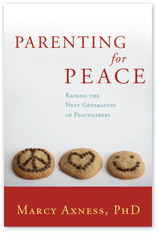I pointed out in Part 1 that our culture harbors a common, dangerous misconception about teens — that they need us to drop the reins and let them “do their thing.” But in terms of their brain and social development, they are as tender as they were as infants. So, we need to remain their active guides and examples. Adults staying actively, enthusiastically involved in the lives of their children and students is one of the best teen addiction prevention measures. In addition to the 3 guidelines offered in Part 1, what else do teens need from us during this time when our window of potent influence is so soon to close?
Our continued connected involvement! Make no mistake: media, coarse culture, and peers wait at the ready to replace your central role as the child’s compass if your understandable hiccup of confidence or constitution causes you to “drop your teen.” So don’t — just simply don’t do it. You’re in this together and there is still so much journey remaining!
 Joseph Chilton Pearce speaks of a “trinity of great expectations” that arises in teens as a normal (though not normally recognized) part of their inner development. One of these three great expectations is a sense in the teen of a hidden greatness within — a secret knowing that he or she has some unique, extraordinary purpose. But instead of finding adult models to reinforce the noble truth behind this elusive knowing, and to support them as they find their way to their unique paths of service and contribution to the world, they find counterfeits: stuff to buy, substances to take, buttons to push — to numb their unmet need for models of greatness.
Joseph Chilton Pearce speaks of a “trinity of great expectations” that arises in teens as a normal (though not normally recognized) part of their inner development. One of these three great expectations is a sense in the teen of a hidden greatness within — a secret knowing that he or she has some unique, extraordinary purpose. But instead of finding adult models to reinforce the noble truth behind this elusive knowing, and to support them as they find their way to their unique paths of service and contribution to the world, they find counterfeits: stuff to buy, substances to take, buttons to push — to numb their unmet need for models of greatness.
With too little inspiring them inside, and too little occupying them outside (such as meaningful, family- and community-centered daily work, which can center and ground them), they emulate adult role models in breathlessly pursuing the diversions of materialism and “culture as anesthetic.” Given the sobering statistics on teen depression and suicide, many still feel an emptiness. Because as the late educator George Leonard acutely observed about the bait-and-switch trap of materialism, “You can never get enough of what you really don’t want.”
The Roots of Addiction
Trying to get enough of what you really don’t want is the poignant basis of addiction. What addicts of all stripes are seeking is the activation of the brain’s pleasure and reward circuits that are unresponsive from not getting what they really do want, and did want years earlier, and have wanted all along — human connection, meaning and joy. This gives us good clues about teen addiction prevention.
The largely unrecognized mainspring of addiction is steeply imbalanced circuitry in the brain’s self-regulating structures, which weren’t adequately developed through secure attachment relationships very early in life. Oxytocin did not flow freely and frequently enough for the stress-and-pleasure system to attain its intended capacity for maintaining inner balance. This leads the individual to rely on external soothing and regulation to (ultimately unsuccessfully) make up for the internal capacities for such centering that weren’t internalized when they should have been. We now know that this circuitry continues to be shaped, through relationships with adults, into adolescence and beyond.
This reaching-outside-yourself for self-regulation is something most of us do to some extent and in some situations (“What a day — I just want to veg out with some TV!”… “I’d love a martini…” … “I need a good workout…”). It’s a question of how essential the external substance or behavior becomes, how compulsively we pursue it, how insufficiently okay we feel without it, and how negative its consequences are in our lives.
Gabor Maté’s eye-opening book about the relational basis of addiction, In The Realm of Hungry Ghosts, takes its title from the Buddhist concept of a realm in which people feel empty and seek solace from the outside, from sources that can ultimately never nourish. And because they cannot truly nourish, the activation they trigger in the pleasure axis is faint and fleeting: the addict is compelled to seek ever more of it for ever diminishing pay-off in “good feelings.” By contrast, as Maté points out, brain circuitry that has been adequately bathed in oxytocin and other chemicals of connection through experiencing relational richness is virtually immune to addiction.
Maté uses the extreme example of drug addiction to shine a light on the less obvious compulsions rampant in society — some of which are culturally sanctioned, such as workaholism and perfectionism. While they differ in degree and desperation, they all spring from the same lack — feeling empty, inadequate, disconnected. This lack is not a moral failing, nor too little will power — it is the result of missing human connection, a void that has become inscribed in a person’s brain circuitry.
Addiction Risk in Teens
A recent study found that teens engaged in “hyper-texting” — sending more than 120 texts per day — are far more likely to be sexually active, abuse drugs or alcohol, smoke cigarettes, and cut school. The study authors emphasized that the connection is correlational and not causal — meaning that rather  than hyper-texting causing these other behaviors, there are factors present for kids doing that much texting that also go along with myriad risky behaviors. Nowhere in the media feeding frenzy did anyone seem to consider that texting, especially with that frequency, has a character of compulsiveness to it — exactly the kind of reaching-outside-yourself attempt at self-soothing I’m talking about. Other kinds of typical adolescent attempts at self-regulation indeed include substances, sex, and the “high” of such adventurous acts as cutting school.
than hyper-texting causing these other behaviors, there are factors present for kids doing that much texting that also go along with myriad risky behaviors. Nowhere in the media feeding frenzy did anyone seem to consider that texting, especially with that frequency, has a character of compulsiveness to it — exactly the kind of reaching-outside-yourself attempt at self-soothing I’m talking about. Other kinds of typical adolescent attempts at self-regulation indeed include substances, sex, and the “high” of such adventurous acts as cutting school.
The same study found that “hyper-networkers” — those spending three hours or more on social networking websites — are the same teens who are at higher risk for stress, depression, and suicide. Remember the central risk factors for addiction are feeling empty, inadequate, disconnected. And remember that adult interest, enthusiasm and relationship are potent teen addiction prevention measures.
Disappointed Expectations
Another of the adolescent’s great expectations, according to Joe Pearce, is the passionate expectation, arising in the middle to late teen years, that “something tremendous is supposed to happen.” It is as if Nature has imbued them with a deep-seated inkling of the magnificent leap that is possible if everything goes to plan with the development of the social brain circuitry. Writes Pearce, “In fact, the development of these new prefrontal additions should ideally result in a mind that is so remarkably different from the one we operated with before that it would present to us in full the biological possibility of transcendence.” Something tremendous, indeed.
But once again — as with so many of the developmentally sensitive windows of transcendent evolutionary potential — our sociocultural circumstances and practices have led us to thwart “something tremendous” and settle for far less. Teens today suffer a double whammy. On one hand, everything in today’s culture challenges them to navigate an edgy world of sex, smokes, weed, booze, blow, porn, LBGT, cutting, huffing, texting, sexting… and to always appear cool, sexy, and unfazed while doing so.
At the same time, epidemic numbers of them no longer feel the reassuring security of emotional connectedness with the important adults in their lives. Research on adolescent risk and resilience consistently turns up an encouraging finding: the most protective factor is strong attachment with an adult. (Stepp points to a landmark national survey showing that a caring relationship with teachers was the strongest predictor of school success; psychologist Carol Gilligan suggests that this effect is even more pronounced in adolescent girls, who depend more than boys do on the assessment of others.)
There is a brutal intolerance amongst adolescent peer groups for any signs of budding individuality amongst its members, which effectively arrests their emotional development inside its shell — when there is not strongly present, interested adult figures central in their lives. In the absence of dedicated psycho-spiritual exploration and work, this arrested development persists lifelong and expresses itself in a constellation that can include chronic frustration and feelings of victimhood; covert aggression; the inability to feel fulfilled; and the inability to reveal themselves in an authentic, intimate or truly connected way in later relationships, including with one’s spouse and children.
Protecting Teens
 This sounds so hopeless, so daunting given the peer-saturated world of our adolescent! What’s a parent to do? As hinted at above, the answer is so simple as to be almost laughable, given the millions of dollars devoted to research on youth violence; programs to “teach” inclusion and non-violence; interventions aimed at empowerment, self-esteem, and resilience. One of the largest resilience studies turned up the primary finding that “teenagers with strong emotional ties to their parents were much less likely to exhibit drug and alcohol problems, attempt suicide, or engage in violent behavior and early sexual activity.” Simply being there, and being interested: one of the most reliable teen addiction prevention programs!
This sounds so hopeless, so daunting given the peer-saturated world of our adolescent! What’s a parent to do? As hinted at above, the answer is so simple as to be almost laughable, given the millions of dollars devoted to research on youth violence; programs to “teach” inclusion and non-violence; interventions aimed at empowerment, self-esteem, and resilience. One of the largest resilience studies turned up the primary finding that “teenagers with strong emotional ties to their parents were much less likely to exhibit drug and alcohol problems, attempt suicide, or engage in violent behavior and early sexual activity.” Simply being there, and being interested: one of the most reliable teen addiction prevention programs!
Psychologist Julius Segal, noted for his pioneering research on youth resilience, concluded that the single factor that most strongly protects children from being overwhelmed by stress (which is a big factor in addiction) is “the presence in their lives of a charismatic adult — a person with whom they identify and from whom they gather strength.”
Writes Gordon Neufeld in his important book Hold On To Your Kids: Why Parents Need to Matter More Than Peers
For parenthood to fade before the end of childhood is disastrous for both parent and child. When we are stripped of our parenthood, our children lose the positive aspects of childhood. They remain immature, but are deprived of the innocence, vulnerability and childlike openness required for growth and for the unfettered enjoyment of what life has to offer. They are cheated of their full legacy as human beings.
Our Children, Ourselves
And we parents are also cheated if we allow our irreplaceable role to be supplanted by cultural counterfeits. Writes Stepp, “The early adolescent years are not only our last best shot at guiding our children, they’re our last best shot at being guided by our children before we lose them to the world.”
Whether children are inspired or disappointed, what they find during the seven-year period of stunning metamorphosis between age seven and fourteen (and actually beyond, till 25) will shape their morality and ethics, direct their will to power or to service, and define the breadth of their humanity. Let us inspire them on this cusp of adulthood, this last best shot at raising peacemakers to share with the world.
Images:
Chill Mimi, Creative Commons license
jay-oh-why-see-e-: ♥, Creative Commons license
Ed Yourdon, Creative Commons license
Tags: addiction, depression, drugs, Gabor Mate, resilience, self-esteem, self-regulation, suicide, teens, texting


